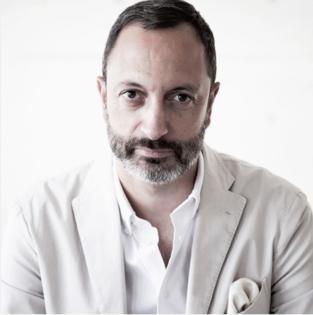Larry Printz: Kia throws down the gauntlet once again at Milan Design Week
Published in Automotive News
Milan Design Week, which is just wrapping up, is an annual affair that draws in the biggest names in fashion, such as Armani, Dior, Hermès, Bottega Veneta, Brunello Cucinelli, Dolce & Gabbana, Prada and Versace. Yet increasingly you’ll find automakers there as well, and this year’s attendees included Bentley, Bugatti, Jaguar Land Rover, Lexus, Maserati, Porsche — and Kia.
If it seems improbable and somewhat out of place for a mainstream automaker to be flexing its muscles alongside the world’s most exclusive brands, maybe you haven’t been paying attention. Kia’s design story is an increasingly compelling one. The automaker was in Milan for the third time in as many years, where it exhibited "Opposites United: Eclipse of Perceptions" at Milan’s Museo della Permanente.
“What we are trying to do is create a mission statement, a mindset, a definition of the way we would like our designers to work,” said Karim Habib, executive vice president and head of Kia Global Design during the exhibit’s opening earlier this week.
But instead of having Kia’s own designers create the presentation, as they did in 2023, or collaborate with artists as they did in 2024, this year’s display left the vision to artists Philippe Parreno and A.A. Murakami. In three large settings, the artists express three tenants essential to Kia’s Opposites United design philosophy: be in the cultural vanguard while pursuing relentless innovation and creative risk-taking, three key elements of Kia’s Opposites United design philosophy.
What you won’t find there are cars. If that seems strange, well, that’s Kia.
Its current chapter started in 2021, when the automaker rebranded itself, redesigned its logo and embraced a new “Opposites United” design philosophy, one that is elemental to design, but also to the South Korean culture and its capital, Seoul. It’s one that embraces opposites to create a fresh form language, one emblematic in Kia’s appearance, at once slab-sided yet supple.
“You go into this vibrant city of Seoul and you see these incredible opposites,” said Andre Franco Luis, advanced design manager at Kia Design America. “Traditional castles from 1395 alongside this vibrant pop culture that you see in K-pop. Everywhere reminds me of it.”
It’s led to Kia’s new vehicular design language that is unlike anything else on the market. Strikingly fresh, modern and distinctive, it taps Korean culture and Kia’s international design staff, bringing together opposing cultural forces that result in fresh designs that are imitative of nothing. Few other brands pull this off, particularly in the mainstream marketplace.
“They (Kia executives) have this go for it, far reaching attitude with anything they do,” said Tom Kearns, chief design officer, Kia Design America. “Even with our very top management, they go, “Is that it? Can you go further than that?”
Kearns, who’s run Kia Design America for two decades, joined the South Korean automaker following 17 years at General Motors, where the attitude was very different. “GM at the time had a lot of brands that were kind of set. But Kia offered an opportunity to really make an impact on the personality and character of the brand.”
Kearns and his California-based team have been responsible for many of Kia’s notable design success, including the Kia Soul concept and production car, the Forte, Sorento and, most recently, the Telluride and EV9, the latter setting the tone for what has followed. And while Kia’s new PV5 electric commercial truck line was developed in South Korea, the WKNDER concept could have only come from California.
“We saw this great lineup of PV fives that that looked really good, and most of them that we saw were a commercial application,” Kearns said. “But we were thinking selfishly. What could we do for ourselves? What would it be? And that's when Andre and his team got involved and took it over.”
The result is a camper van like no other. Its walls have embedded slats to mount components from your garage. Its wheels feature wind turbines that generate power while the van is moving. Its floor is made from recycled Nike sneakers.
Such innovation and in-depth innovative thinking make one wonder what innovations await us on their forthcoming products.
Earlier this week, Kia announced that it will expand its hybrid lineup across all segments, from compact to full-size models, including the Seltos and Telluride. The move comes as hybrid demand is increasing and U.S. environmental regulations remain uncertain. Kia is looking to double its hybrid sales to one million units by 2030. It’s also seeking sales of 2.33 million EVs that same year., of which 250,000 will be electric commercial vehicles and vans. Kai is still deciding which vehicles will come to America. Executives at the company have also confirmed that a new Telluride is on the way and don’t be surprised if it’s a hybrid — although the latter is an educated guess. More tantalizing is the prospect of a battery-electric pickup truck based on a new EV platform for the American market. Officials are looking for annual sales of 90,000 units and a seven percent market share. Finally look for Kia to introduce three new model lines, two of them electric, at the upcoming New York International Auto Show.
©2025 Tribune Content Agency, LLC













Comments